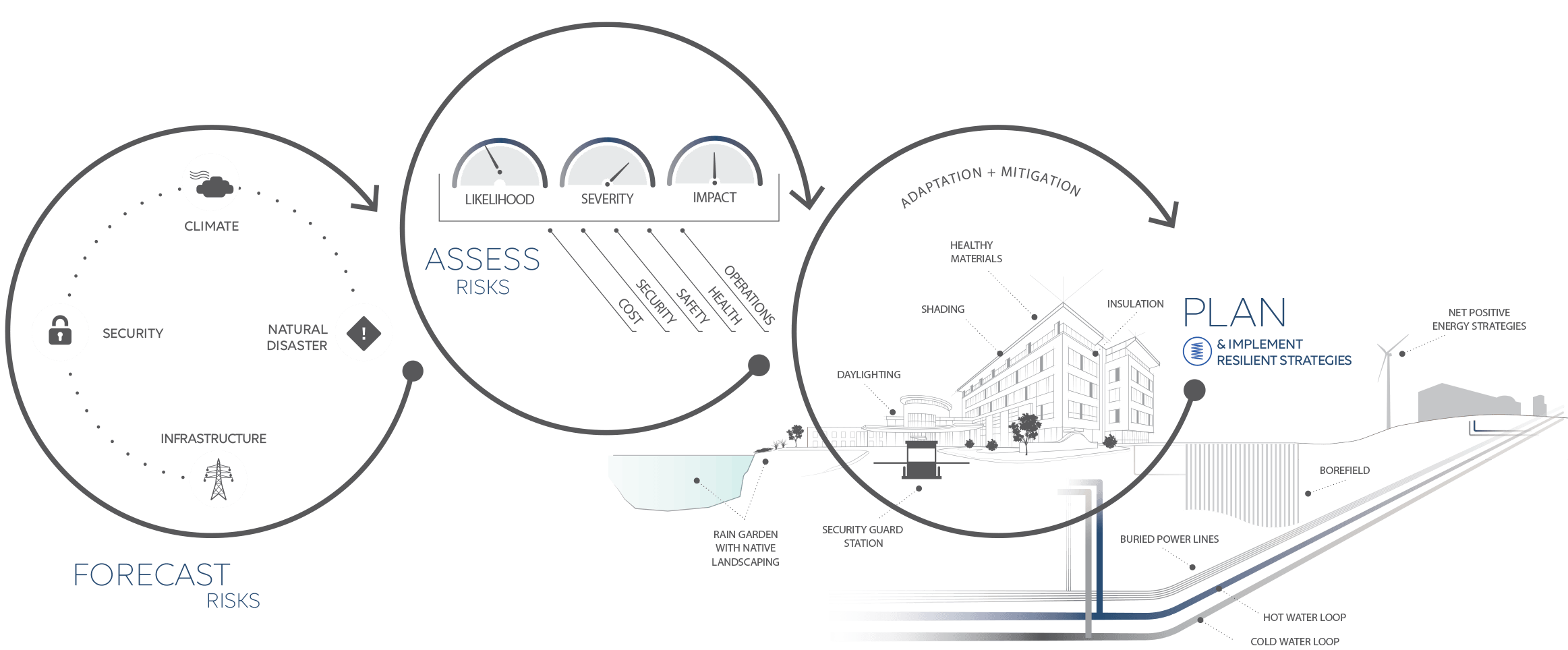 After forecasting risk based on four factors (natural disaster, climate, security, and infrastructure), the next step in resilient design is to assess the likelihood, severity and impact of those risks. What is the likelihood of a risk becoming a reality, and what would the severity be of that risk? A ½-inch per hour rain event will be far less severe than a 3½-inch per hour rain event. What are the potential impacts, both short-term and long-term? How would those impacts affect operations, health and safety of occupants or building security? What might the cost implications be?
After forecasting risk based on four factors (natural disaster, climate, security, and infrastructure), the next step in resilient design is to assess the likelihood, severity and impact of those risks. What is the likelihood of a risk becoming a reality, and what would the severity be of that risk? A ½-inch per hour rain event will be far less severe than a 3½-inch per hour rain event. What are the potential impacts, both short-term and long-term? How would those impacts affect operations, health and safety of occupants or building security? What might the cost implications be?
Many facility owners already have emergency management plans in place, such as fuel supply for back-up generators as required by code, so anticipating risk is not necessarily new. For instance, state and federal codes require 96 hours of fuel supply for emergency power at hospitals in seismic zones after a municipal power outage. Airports have instituted numerous security measures under the TSA since 9/11. Schools and even some workplaces now have emergency plans and drills for active shooter situations.
Many facility owners, however, approach risk management incrementally rather than holistically. By systematically assessing risk, owners can prioritize possible extreme events and determine which may have the greatest impact. For instance, one hospital on the Northeast Atlantic coast and another on the Southeast coast both risk being impacted by a category 3 or stronger hurricane, but the Northeast hospital has a lower likelihood on average. Yet as Hurricane Sandy destructively demonstrated in 2012, low likelihood can still translate into high impact if a hurricane does occur. In this example, hospital administrators may plan for a hurricane even though likelihood is low in order to continue to serve their patients should such a storm occur.
The goal of the assess phase is to put information in building owners and managers’ hands so they can make informed decisions about how to plan for risk–as discussed in our following post on planning for risk.

